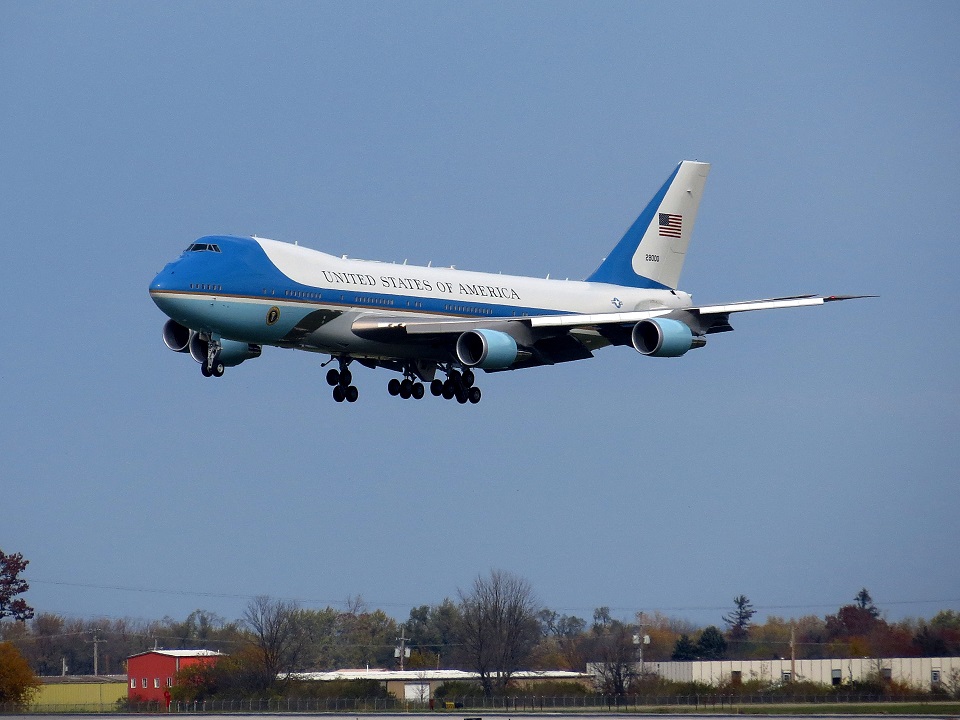Aerospace
Air Force Drops Boeing from Consideration in ‘Doomsday Plane’ Contest

Boeing confirmed on Friday that the U.S. Air Force eliminated Boeing from the competition to develop an E-4B Nightwatch replacement, reversing the competition to build the next generation of aircraft known as the “Doomsday Plane” because of its ability to withstand a nuclear war.
The E-4B Nightwatch, also referred to as the “Doomsday Plane,” is a modified Boeing 747-200B used in military operations. It is built to resist the electromagnetic pulse from a nuclear explosion and functions as the National Airborne Operations Centre. The aircraft is capable of conducting routine training and readiness missions while staying in the air for several days.
Boeing and the Air Force were unable to agree on data rights and contract terms, according to Reuters. This was partly due to Boeing’s refusal to sign a fixed-price agreement that would have required it to pay for costs over a predetermined amount.
A major change in the military aircraft manufacturing landscape has occurred with Boeing’s removal from the ‘Doomsday Plane‘ competition. It’s unclear who will step up to take over Boeing’s position as the US Air Force works to update its aircraft and remain prepared for changing international threats.
According to budget documents, the Air Force intends to continue developing SOAC with spending of $889 million in fiscal 2024 and $8.3 billion through fiscal 2028. Early in the 2030s, the E-4B is anticipated to reach the end of its operational lifespan.

Aerospace
When Ratan Tata was denied entry to the airfield at the Aero India show, he waited

During our visit to Aero India 2019, we had the unexpected opportunity to see Ratan Tata at the event, which was a thrilling moment for us. However, there was a surprising hiccup when the security staff didn’t allow him to enter due to a lack of a security pass.
Despite this, he remained calm and patiently waited for about 20 minutes until a member of the Tata team brought him the required pass, after which he calmly proceeded inside. It was a humbling sight, showcasing his composed demeanor even in such situations.
Ratan Tata ji is not only a renowned industrialist but also a trained pilot, holding a pilot’s license. In 2007, he became the first Indian civilian to fly the F-16 Falcon during the Aero India show in Bangalore—a proud moment for the nation.
His passion for aviation extended beyond flying, as he played a key role in shaping India’s aerospace industry. Under his leadership, Tata ventured into manufacturing and maintaining aerospace components while upholding its legacy of quality. Notably, Tata’s collaboration with Airbus to develop and manufacture the C295 aircraft is a testament to its growing influence in the sector.
-

 Aviation2 months ago
Aviation2 months agoMicrosoft Flight Simulator Raises $3 Million to Bring Back the An-225 Mriya
-

 Airlines2 months ago
Airlines2 months agoQatar Citizens Can Travel to the United States Without a Visa
-

 Aviation2 months ago
Aviation2 months agoQatar Airways bans these new Electronic Devices on plane
-

 Airlines2 months ago
Airlines2 months agoJapan Airlines Rolls Out Free Domestic Flights to International Passengers
-

 Defence2 months ago
Defence2 months agoWhich Country Has the Largest Fleet of Fighter Aircraft?
-

 Airport2 months ago
Airport2 months agoWestern Sydney Airport Welcomes Its First Plane After 6 Years of construction
-

 Travel2 months ago
Travel2 months agoQatar Airways Launches Four Additional Flights from Amsterdam
-

 Aviation2 months ago
Aviation2 months agoDid you know ? Once Boeing 747 carried 1088 passenger in 1991








